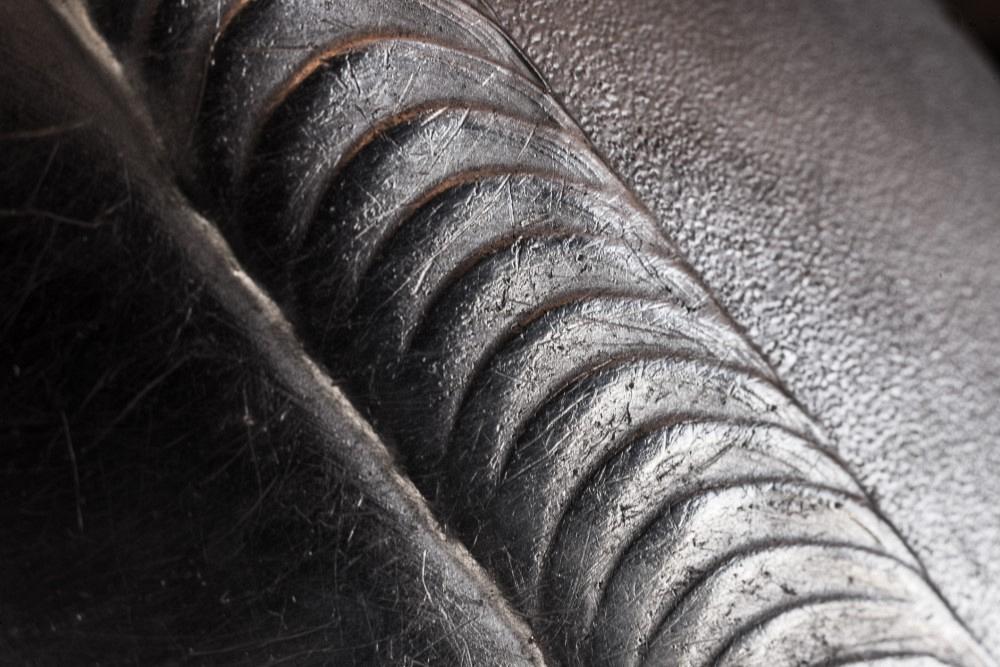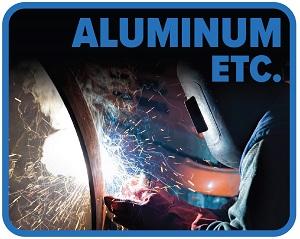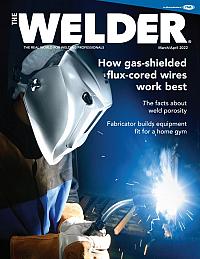Industrial Systems and Manufacturing Instructor
- FMA
- The Fabricator
- FABTECH
- Canadian Metalworking
Categories
- Additive Manufacturing
- Aluminum Welding
- Arc Welding
- Assembly and Joining
- Automation and Robotics
- Bending and Forming
- Consumables
- Cutting and Weld Prep
- Electric Vehicles
- En Español
- Finishing
- Hydroforming
- Laser Cutting
- Laser Welding
- Machining
- Manufacturing Software
- Materials Handling
- Metals/Materials
- Oxyfuel Cutting
- Plasma Cutting
- Power Tools
- Punching and Other Holemaking
- Roll Forming
- Safety
- Sawing
- Shearing
- Shop Management
- Testing and Measuring
- Tube and Pipe Fabrication
- Tube and Pipe Production
- Waterjet Cutting
Industry Directory
Webcasts
Podcasts
FAB 40
Advertise
Subscribe
Account Login
Search
Aluminum Etc.: How aluminum pulse welding halts burn-through
- By Gina Cutts
- Updated August 7, 2023
- April 15, 2022
- Article
- Aluminum Welding
A lot of hesitation surrounding welding aluminum comes from being heat-shy, especially when you are dealing with thin-gauge sheets of metal. If the necessary amperage to penetrate the oxidized layer is causing burn-through, you might want to use the pulse feature on your power source.
With the help of Cameron Moore, a student enrolled in my welding program, we were able to demonstrate how using the pulse option set to 1 pulse per second on our air-cooled GTAW power source enabled him to achieve excellent penetration and bead profile. We used 3/32 E3 tungsten and a 10% flow rate of argon.
We set up a 3- by 8-in. piece of 0.040-in. aluminum and ran two stringer beads. Amperage was set to 110. Our machines were set at 50 background amps with an AC balance of 60, and we did not adjust them for this demonstration.
Without the pulse enabled, we burned through the sheet within the first inch of the weld. Cameron had to back off his foot pedal to 38 amps to complete the stringer bead, which resulted in a lumpy, cold, and high-profile bead that had inadequate penetration. It also had the frosty lines down the length of the weld, which indicated that he did not penetrate the oxide layer.
After letting the sheet cool down, we attempted the same stringer bead with the same 110-amperage setting but with 1 second of pulse. Cameron was able to break through the oxidized layer and continue his bead without burn-through, resulting in an even, flush, and visually appealing bead with proper penetration.
The Difference Aluminum Pulse Welding Made
The difference was that after the initial startup at 110 amps, it dropped to 66 amps every other second. This controlled the heat input to the aluminum and made it workable. He also timed dipping the filler metal each time the machine pulsed to the higher amperage.
One of the hardest things about welding aluminum is knowing how all of the settings affect your aluminum weld. Taking the time to understand the settings will drastically increase the effectiveness and aesthetics of your aluminum welds, and it’s worth your time to know.
About the Author

About the Publication
subscribe now

The Welder, formerly known as Practical Welding Today, is a showcase of the real people who make the products we use and work with every day. This magazine has served the welding community in North America well for more than 20 years.
start your free subscription- Stay connected from anywhere

Easily access valuable industry resources now with full access to the digital edition of The Fabricator.

Easily access valuable industry resources now with full access to the digital edition of The Welder.

Easily access valuable industry resources now with full access to the digital edition of The Tube and Pipe Journal.
- Podcasting
- Podcast:
- The Fabricator Podcast
- Published:
- 04/16/2024
- Running Time:
- 63:29
In this episode of The Fabricator Podcast, Caleb Chamberlain, co-founder and CEO of OSH Cut, discusses his company’s...
- Industry Events
16th Annual Safety Conference
- April 30 - May 1, 2024
- Elgin,
Pipe and Tube Conference
- May 21 - 22, 2024
- Omaha, NE
World-Class Roll Forming Workshop
- June 5 - 6, 2024
- Louisville, KY
Advanced Laser Application Workshop
- June 25 - 27, 2024
- Novi, MI

































